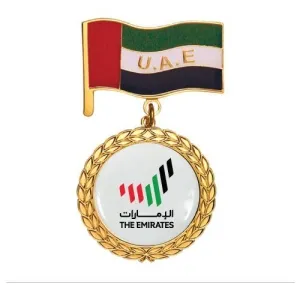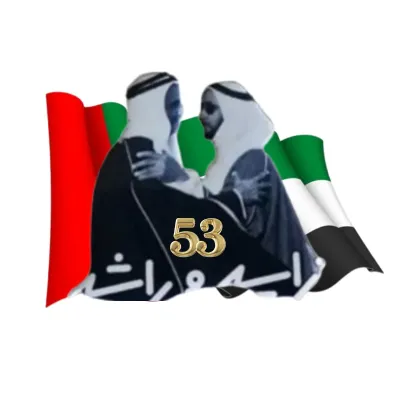Meaning of Flag of Somalia
The Flag of Somalia: A Symbol of Unity and Aspiration

Introduction:
The flag of Somalia, a nation nestled in the Horn of Africa, embodies a rich tapestry of history, culture, and aspiration. Its design, colors, and symbolism speak volumes about the values and aspirations of the Somali people.
Historical Background:
The creation of Somalia's flag dates back to the nation's quest for independence. In 1954, a competition was held to design a national flag that would reflect the country's identity and aspirations. The winning design, adopted on October 12, 1954, has remained a potent symbol of Somali unity and resilience ever since.
Design and Color Details:
The flag of Somalia features a sky-blue field adorned with a white five-pointed star in the center. These colors hold profound significance:
1. Sky-Blue Field:
The predominant sky-blue color represents the sky that blankets Somalia, symbolizing the vast expanse of possibilities and opportunities that lie ahead. It also signifies peace and tranquility, values cherished by the Somali people as they strive for harmony and stability.
2. White Star:
Positioned in the center of the flag, the white five-pointed star represents the five historical regions inhabited by Somali people: Italian Somaliland, British Somaliland, French Somaliland (Djibouti), Ogaden (part of Ethiopia), and Northern Kenya. This star serves as a beacon of hope, unity, and the collective aspirations of Somalis worldwide for a united and prosperous Somalia.
Symbolism:
The flag of Somalia is more than just a piece of cloth; it is a potent symbol of national pride, resilience, and unity. It serves as a rallying point for Somalis across the globe, reminding them of their shared heritage and common goals. The flag embodies the spirit of independence, self-determination, and the unwavering resolve of the Somali people to overcome challenges and build a better future.
Contemporary Relevance:
In contemporary Somalia, the flag continues to hold immense significance. Despite facing myriad challenges, including political instability, armed conflict, and socio-economic hardships, the flag serves as a unifying emblem, inspiring Somalis to persevere in their quest for peace, progress, and prosperity.
Historical Significance:
The adoption of Somalia's flag in 1954 marked a pivotal moment in the nation's history. At the time, Somalia was under colonial rule, with various regions controlled by different European powers. The design of the flag, with its emphasis on unity and territorial integrity, reflected the aspirations of Somalis for independence and self-governance. It served as a rallying cry for the anti-colonial movement and played a crucial role in galvanizing support for Somalia's struggle for liberation.
Evolution of the Flag:
While the basic design of Somalia's flag has remained unchanged since its adoption, the flag has undergone minor modifications over the years. For instance, during the reign of President Siad Barre, a five-pointed star with a single point facing upward was briefly replaced by a star with two points facing upwards. However, the original design was reinstated following the collapse of Barre's regime in 1991. Despite political upheavals and shifts in governance, the flag has remained a constant symbol of Somali identity and unity.
Global Recognition:
Beyond Somalia's borders, the flag is recognized as a symbol of Somali identity and resilience. It is proudly displayed at diplomatic missions, international conferences, and sporting events, serving as a reminder of Somalia's presence on the world stage. The flag's distinctive design and colors make it instantly recognizable, fostering a sense of pride and belonging among Somalis living abroad.
Cultural Significance:
In addition to its political and historical significance, Somalia's flag holds deep cultural meaning for the Somali people. It is often used in traditional ceremonies, cultural celebrations, and national holidays as a symbol of national pride and solidarity. The flag's colors and symbolism are woven into the fabric of Somali society, serving as a source of inspiration and unity for generations to come.
Continued Inspiration:
As Somalia continues its journey toward stability and development, the flag remains a source of inspiration and hope for millions of Somalis. Despite the challenges that lie ahead, the flag serves as a reminder of the resilience and determination of the Somali people to overcome adversity and build a brighter future. It symbolizes the enduring spirit of unity, peace, and progress that defines the Somali nation, guiding its people toward a shared destiny of prosperity and success.
The flag of Somalia stands as a testament to the resilience, unity, and aspirations of the Somali people. Its design, colors, and symbolism encapsulate the nation's rich history, cultural heritage, and collective dreams for a brighter tomorrow. As Somalia navigates through its journey of nation-building, the flag remains a steadfast symbol of hope, reminding Somalis everywhere of their shared identity and the promise of a better future.
In conclusion, the flag of Somalia is not merely a piece of cloth fluttering in the wind; it is a powerful emblem of the Somali people's journey through history, their struggles, triumphs, and aspirations. From its inception during the fight for independence to its continued relevance in the contemporary era, the flag has served as a unifying force, rallying Somalis around a shared identity and vision for the future.
Through its design and colors, the flag encapsulates the essence of Somalia's rich cultural heritage and the spirit of unity that binds its people together. The sky-blue field represents the boundless potential and peaceful aspirations of the nation, while the white star symbolizes hope, unity, and the collective dreams of Somalis worldwide for a united and prosperous Somalia.
The historical significance of the flag cannot be overstated. It emerged at a time when Somalia was striving to break free from colonial rule and assert its sovereignty. The adoption of the flag marked a defining moment in the nation's history, signaling the birth of a new era characterized by resilience, unity, and determination.
Conclusion:
Despite facing numerous challenges, including political instability, armed conflict, and socio-economic hardships, the flag continues to serve as a beacon of hope and inspiration for Somalis everywhere. It is a reminder of their shared heritage and the values that bind them together as a people.
Moreover, the flag's global recognition underscores Somalia's presence on the world stage and its aspirations for peace, progress, and prosperity. Whether displayed at diplomatic missions, international conferences, or cultural events, the flag serves as a symbol of Somali identity and resilience, fostering a sense of pride and belonging among Somalis living both at home and abroad.
As Somalia charts its course towards stability and development, the flag remains a constant reminder of the nation's potential and the collective responsibility of its citizens to build a better future. It symbolizes the enduring spirit of unity, peace, and progress that defines the Somali nation, guiding its people toward a shared destiny of prosperity and success.
In essence, the flag of Somalia is more than just a symbol; it is a manifestation of the hopes, dreams, and aspirations of a proud and resilient people. As it waves proudly in the wind, it serves as a reminder of the journey that Somalis have traveled and the path that lies ahead—a path illuminated by the enduring values of unity, peace, and progress.
Spotlight on Trending Promo Gear
Browse the most popular and trending Corporate Gifts
Promotional Sports Water Bottles
Promotional Sports Water Bottles
Promotional Sports Water Bottles
Back To School Gifts
Promotional Sports Water Bottles
Promotional Sports Water Bottles
Promotional Sports Water Bottles
Eco Friendly Bottles
Promotional Sports Water Bottles




















